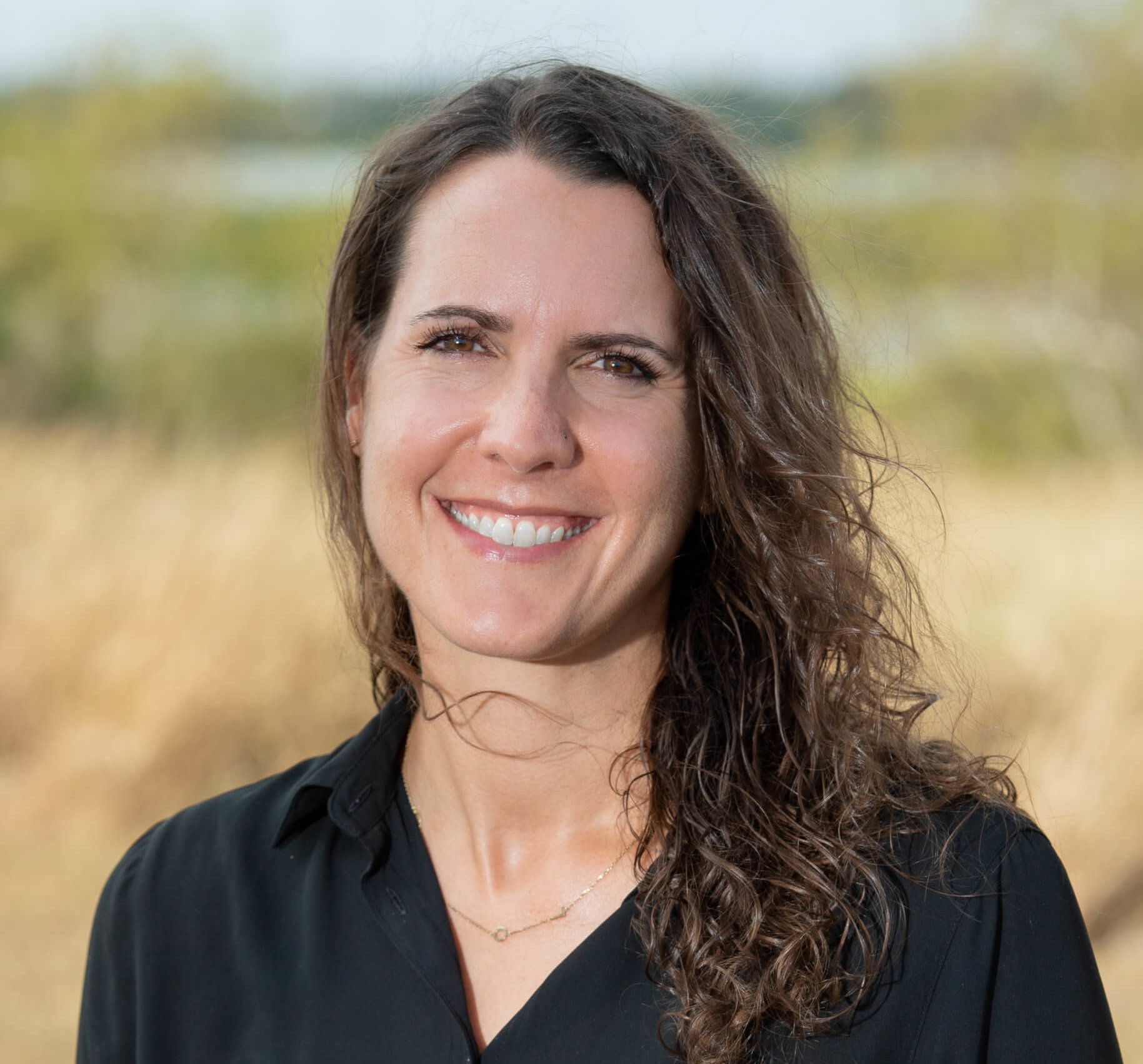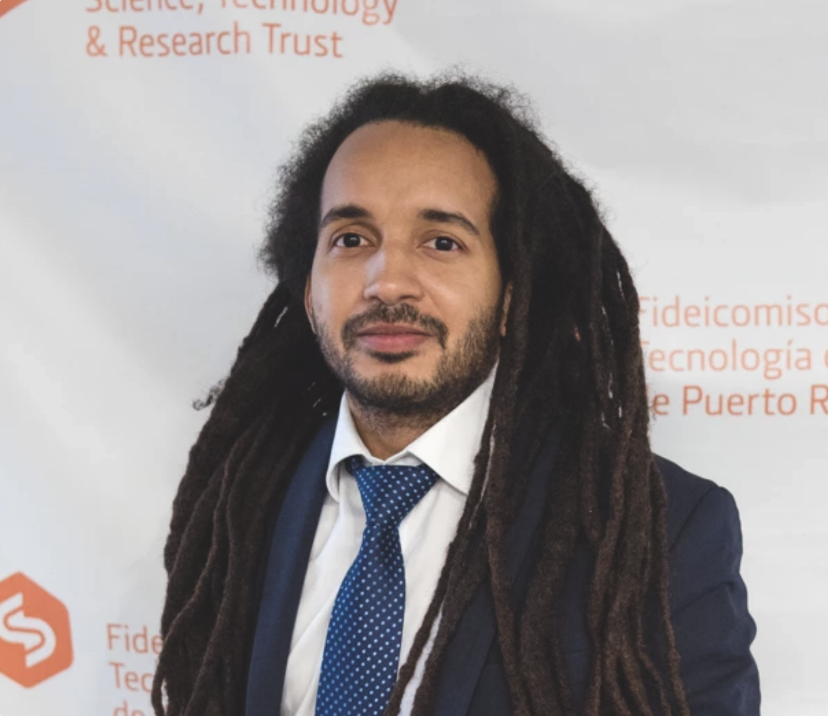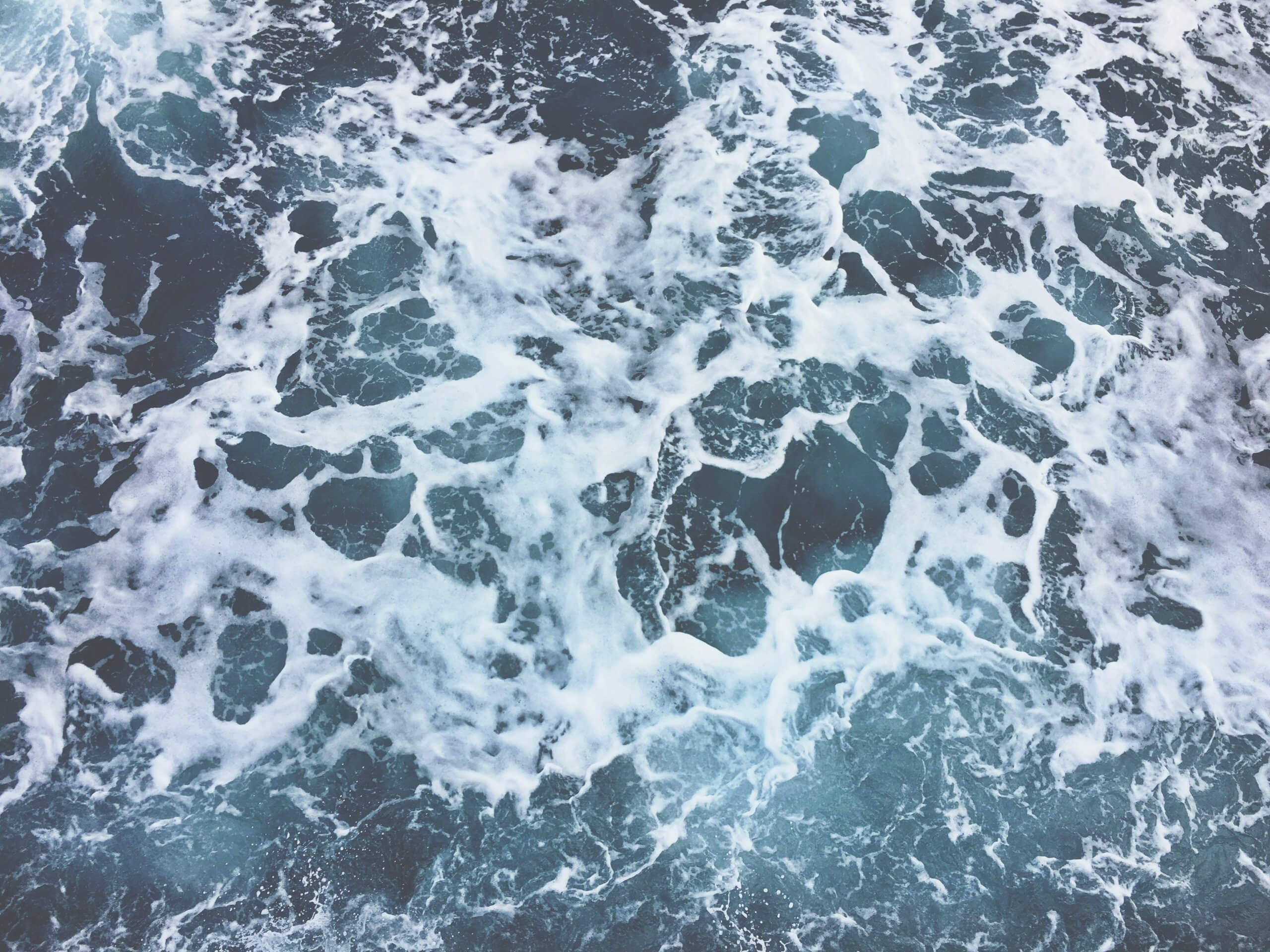Science can have the greatest impact when scientists engage beyond the lab and field and build meaningful connections with the people who can most benefit from their work. But the path to connection isn’t always clear or straightforward. What if there are existing challenges and tensions between different groups? How do we keep conversations from becoming polarized? What role does science play in those conversations?
If you’ve asked yourself these questions before, you’re in good company. In this video, COMPASS’s Christina Hoenow talks with Dr. Jenni Pollack, the Chair for Coastal Conservation and Restoration at the Harte Research Institute for Gulf of Mexico Studies at Texas A&M University-Corpus Christi. Jenni shares how she’s navigated some of these challenges in her engagement efforts, what her experience working with COMPASS has been like, and the exciting future of oyster reef conservation in Texas.
We’re thrilled for you to meet Jenni and, hopefully, feel more informed and inspired to participate in your community’s conversations too.
Dr. Jennifer Pollack is the Chair for Coastal Conservation and Restoration at the Harte Research Institute for Gulf of Mexico Studies at Texas A&M University-Corpus Christi. Her work aims to provide science-based information to support resource management and conservation efforts and improve sustainability of coastal ecosystems. She examines the proficiency of restored habitats in replacing lost ecological functions, including water filtration, provision of nursery and feeding habitat for fish and invertebrates, shoreline stabilization, and enhancement of biodiversity.
For more information about Jenni’s work and resources mentioned:
- Learn more about Harte Research Institute for Gulf of Mexico Studies at Texas A&M University-Corpus Christi
- Visit Jenni’s lab page: Coastal Conservation & Restoration Page
- Visit oysterrestoration.org to see where conditions are favorable for oyster restoration on the Texas Coast
- Read Jenni’s article in Texas Saltwater Fishing Magazine: “A Case for Conserving Oyster Reefs”
- Listen to Jenni’s interview on the Texas Standard on NPR (~41:20)
- Follow Harte Research Institute for Gulf of Mexico Studies on social media (Twitter, Facebook, Instagram, Youtube)
Full Transcript [edited slightly for clarity]
Christina: Hi everyone! My name is Christina. I am part of the Science Solutions team at COMPASS. We help scientists collaborate with relevant stakeholders to generate and elevate equitable solutions around climate change and biodiversity loss. Today, I’m joined by one of our scientists, Dr. Jenni Pollack, for a conversation on policy and community engagement. Jenni is the Chair for Coastal Conservation and Restoration at the Harte Research Institute [for Gulf of Mexico Studies at Texas A&M University-Corpus Christi] where she works to improve sustainability of coastal ecosystems. Jenni, thank you so much for joining me today.
Jenni: Thank you for having me.
Christina: Awesome. All right, let’s dive on in. To start us off, tell me a bit about your personal ‘so what?’ Why did you choose to take your work and engage in the policy space in Texas?
Jenni: I’ve always wanted to do the type of science that can be used to solve a problem. I mean, I’m a kind of classically-motivated applied scientist. This was really obvious to me even in graduate school. There was a seminar speaker that I attended and at the end of this long talk, you know, that took an hour with lots of powerpoint slides, somebody in the audience raised their hand and said, ‘Who cares? Why should it matter to me?’ That struck me at the time and has stuck with me since. I want to be doing the kind of science that is clearly aimed towards helping solve a problem. In Texas, for me, that problem has been coastal resource management or management of coastal habitats.
Christina: For you that specific thing that you’re working on right now is oysters, right? Isn’t it?
Jenni: That’s right. Most of my research in the past decade actually has been focused on oyster reefs. So we know that oyster reefs are one of the most threatened marine habitats across the globe. Because of this sort-of-recent recognition—I would say in the last maybe 20 years is when folks really started paying attention—habitat restoration activities have increased exponentially, but also the need for science to understand how restored habitats may or may not be replacing some of the ecological benefits that are lost. Habitat loss is the place that my lab has really been trying to focus our science.
Christina: Thank you for sharing some of your context and what exactly it is that you’re working on. So diving into a bit about the communication side of your work, are there any specific challenges that you’d feel comfortable sharing? And how have these helped to shape your approach to talking about your work publicly?
Jenni: One of the biggest challenges for me has been the public communication side of things and how to best share science without stepping into an advocacy role, for example, or without aligning yourself with one side versus another. But when there are relationships and tensions that already may exist on an issue, it can be difficult—even as a scientist who is walking that unbiased, sort of evidence-based line to communicate effectively.
Christina: Looking at the other side of those challenges, are there any wins that you’ve had recently in this space that you’d like to share?
Jenni: I’ve been asked to give lots of talks about the research that we do and asking about conserving oyster reefs and asking about habitat restoration. One of the talks that stood out to me, though, was [when] I was asked to give a talk where I was paired with an oysterman-–with a commercial oyster fisherman-–and I was nervous about how this was gonna turn out, you know. I didn’t want it to be sort of like a black versus white or, you know, red versus black… I didn’t want it to be these two very polarized stories surrounding the same issue. So I had some conversations with this oyster fisherman ahead of time and we kind of came to this place where regardless if you’re a fisherman, if you’re a scientist, if you’re a resource manager, if you’re a tourist coming to the coast, everyone wants more oysters in the water. And I feel like by establishing a common ground, we took more interest in what the other person was saying and it also kind of allowed us to come back to this place where we had an agreement, even though we were taking different philosophies to the same issue. So that was one win which I think just demonstrated to me that there is a way to come together.
Christina: How have you approached building relationships and support for your work and how is the communication that you’ve done with all of these different outlets now informed how you’re kind of moving forward?
Jenni: I think one of the most important things that I’ve learned is how critical it is to get outside of your office and get outside of campus and listen and talk and share information and just chat with people even informally. We host community-based habitat restoration events where we have volunteers come and bag up oyster shells. They do this at different parts of the coast –east coast and gulf coast– and we use those bags of oyster shells to put them back in the water and that creates habitat for organisms to live in. It’s created such an opportunity to engage and get involved with folks in the community both from hearing their concerns, but also I think just the opportunity to kind of nurture a culture of stewardship or encourage a culture of recognizing how important the bay that’s in the backyard of everyone here really is. So it provides us the opportunity to make those connections. I think the more people that are connected to these coastal systems, the more they’re going to take care of them because they feel like they’re theirs.
And then the other part of it, like I said, is just learning to listen to others. You know, going to meetings that can be heated and that I’m nervous about and try to be a chameleon and stand in the back—but just be a fly on the wall and be able to start to understand the conversations that are happening when scientists aren’t necessarily in the room or the conversations that aren’t happening between scientists that we need to know about to guide our science.
Christina: Thinking about those contentious conversations, I know from personal experience as well that attending things like public comment period or public comment presentations and public hearings can so often be, like you said, kind of scary and can make you doubt your work and your place and whether or not you’ll be able to build those relationships with those communities that you need to build. Can you just share your thoughts around that? I know we don’t have a solution to that question and to that problem, but I want scientists to know that they’re not alone in these situations.
Jenni: I think maybe naively my thought was that once you start to engage with stakeholders that there’s kind of a straight line to solutions or that it’s a clear-cut thing, like the science is here and we serve everyone and so just come to the table with us and we can help provide solutions. But, again, I think that was naive because there are histories of relationships and communication challenges and mistrust and, you know, real livelihoods.
One of the big challenges that I’m working around right now, of course, is potential permanent closure of parts of the bays in Texas to commercial oyster harvest. So you can imagine if your livelihood is as an oyster harvester, this is a really big deal and it’s not that a scientist comes in the room and it makes you feel a lot better-–it really doesn’t probably change how you feel at all. I am trying to learn how to, against that backdrop, still be effective in being this honest broker, being the person who can make sense of the science that’s out there, understand the concerns of oystermen as well as resource managers and, if the science isn’t there, try to help gather the data that maybe helps everyone come to a place of agreement. Oftentimes it’s simple–the science that needs to be done is fairly simple–but we just never recognized or were aware that those are where the problems existed. So this allows us an opportunity, hopefully, to maybe make those conversations more tenable in the future by giving them a factual basis to stand on.
Christina: There’s so much mistrust, unfortunately, of science and scientists [because of] people who wield, unfortunately, science in harmful ways sometimes. So really rebuilding that trust and your position as that honest resource who is there to help them as well as the environment, I think that’s a critical point here.
Turning the topic a little bit, what has your experience working with COMPASS been like?
Jenni: Working with COMPASS has been unlike any other professional training that I’ve participated in. I mean, it’s been really refreshing and wonderful and I feel like I am making progress every time we have a meeting. I think that I was telling somebody recently that working with COMPASS is part professional development and part sort of therapy session because there really is—at least for me personally as a scientist—the need to sort of get feedback and guidance on this need to stay true to the facts, stay true to the data, to stay true to the science and kind of face this fear [because] it’s also important as a scientist to be the source of the information that’s also being communicated to the public.
COMPASS has been so helpful with everything from helping me craft a message from scratch, but also helping me sort of refine the message that I do have. And also just giving me, I think, the confidence and the feedback from working with so many other scientists who have probably walked a very similar path in the past under COMPASS’s guidance to say, ‘This is totally normal. Let me share with you some resources of somebody who had to do the same thing that you did.’ And watching those successes or reading those successes or, you know, just being a party to those things shows you that, ‘okay, it’s worth putting in the work to get to that place.’ Which is a place that, you know, probably six months ago I wouldn’t have thought that I would be confident in achieving.
Christina: It’s that squiggly line graphic [where] you think success is a straight line from point A to B, but in reality it’s a squiggly line with ups and downs. And that can feel really lonely sometimes especially in the science world because it is often so siloed, but that’s why we work on breaking down those silos and breaking down those walls and just talking to each other is such an important thing.
Some exciting things, what is exciting for you about the future of oyster reefs in Texas? There’s a lot of stuff here.
Jenni: There’s a lot going on! I mean, what excites me about the future of oyster reefs in Texas is that there’s a lot of attention on conservation right now and on sustainability of the resource. And that is sustainability for everyone. I mean there’s an eye towards sustaining oysters such that the fishery will continue into the future and provide those livelihoods and that economic generator that the state depends on, but also sustainability of the reef for all of the ecological benefits that they provide. So I’m happy that currently there is a focus on the importance of oyster reefs for multiple benefits, not just one benefit which I think in terms of economic generation that was the focus in the past and now there’s a more robust understanding of the benefits of oyster reefs, so that’s great.
But also Texas is having a lot of changes. So Texas is the last coastal state to bring oyster aquaculture online. We have two commercial oyster farms that are in the water now. From my understanding, one of them will have their first crop of oysters to be harvested from Texas waters in about a month or so. This is another…
Christina: Yay!
Jenni: Yeah! This is another industry that maybe allows oystermen who have struggled under uncertainties with the public resource to be able to transition into a similar field in which they’re harvesting rather than dredging from the wild population. I think it has the opportunity to maybe take some pressure off of the resource while still allowing for sustainable fresh seafood to be produced by Texas bays which is really important to the state and to kind of our coastal iconic way.
Christina: I know you have an actual like an accessible tool that you’ve been working on, oysterrestoration.org, can you share a little bit about that?
Jenni: Yes, so part of the work that we’re doing is–again–to try to make science available to everyone. One way that we did this was to create a restoration suitability index tool. It’s available on oysterrestoration.org and what this is, is essentially a series of maps for all of the bay systems in Texas that clearly illustrate the places that are better–or less risky–in terms of restoring oyster reefs and places that are less suitable for restoring oyster reefs. With the idea being, as different groups have money to bring to the table for habitat restoration, this can help them invest their money in the best places and for us to really be able to build a portfolio of small and large restoration projects all of which have higher chances for success.
Christina: Jenni, thank you so much for joining us today. I’m so excited for your work moving forward. It’s been an absolute pleasure working with you on this project, and I’m so excited to keep moving it forward. You can find more about Jenni’s work at [harte.org] under the coastal conservation page. You can find HRI on social media [Twitter, Facebook, Instagram, Youtube] and Jenni has an NPR interview coming out later which we’re super excited about and we will be sure to share that as well. Thank you so much, Jenni. I’m super excited for our future work with you.
Jenni: Thanks, Christina. Me too.



